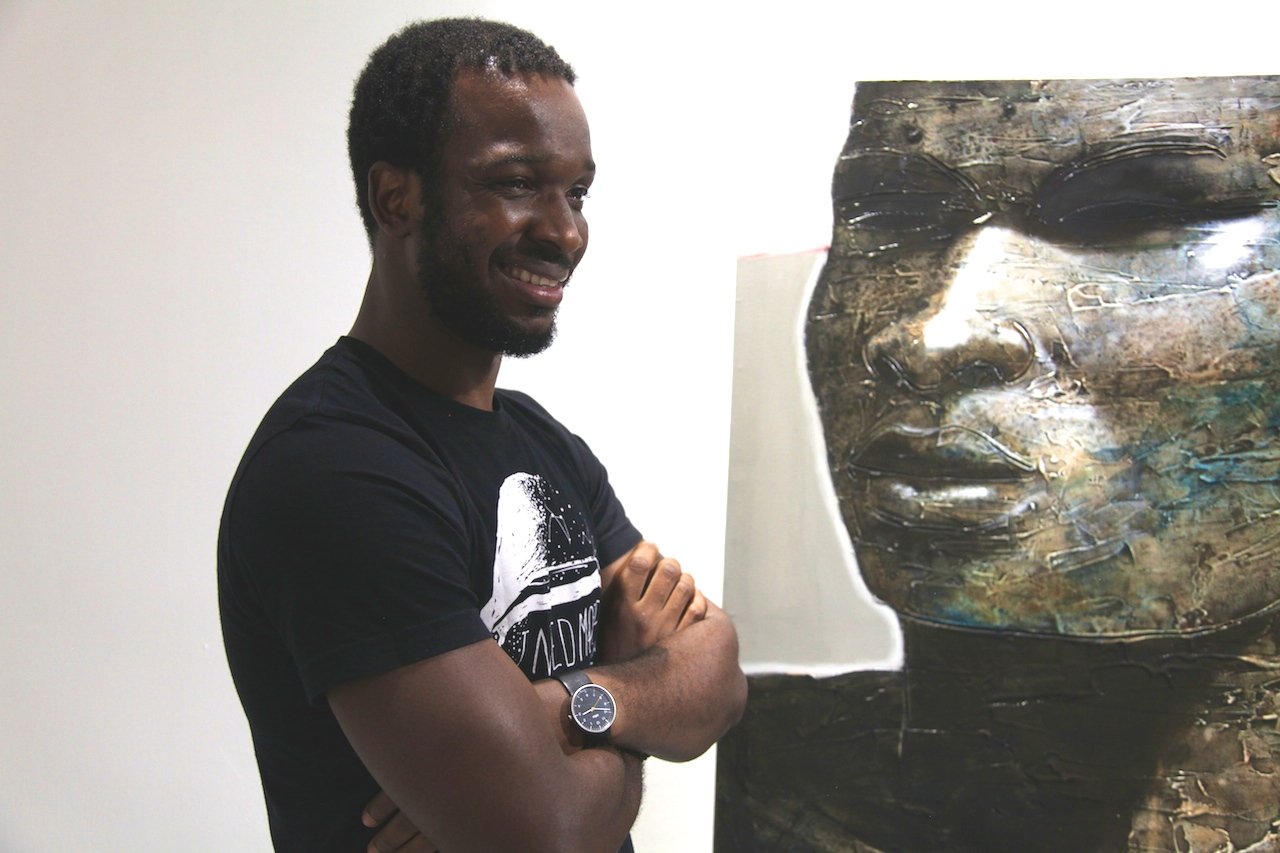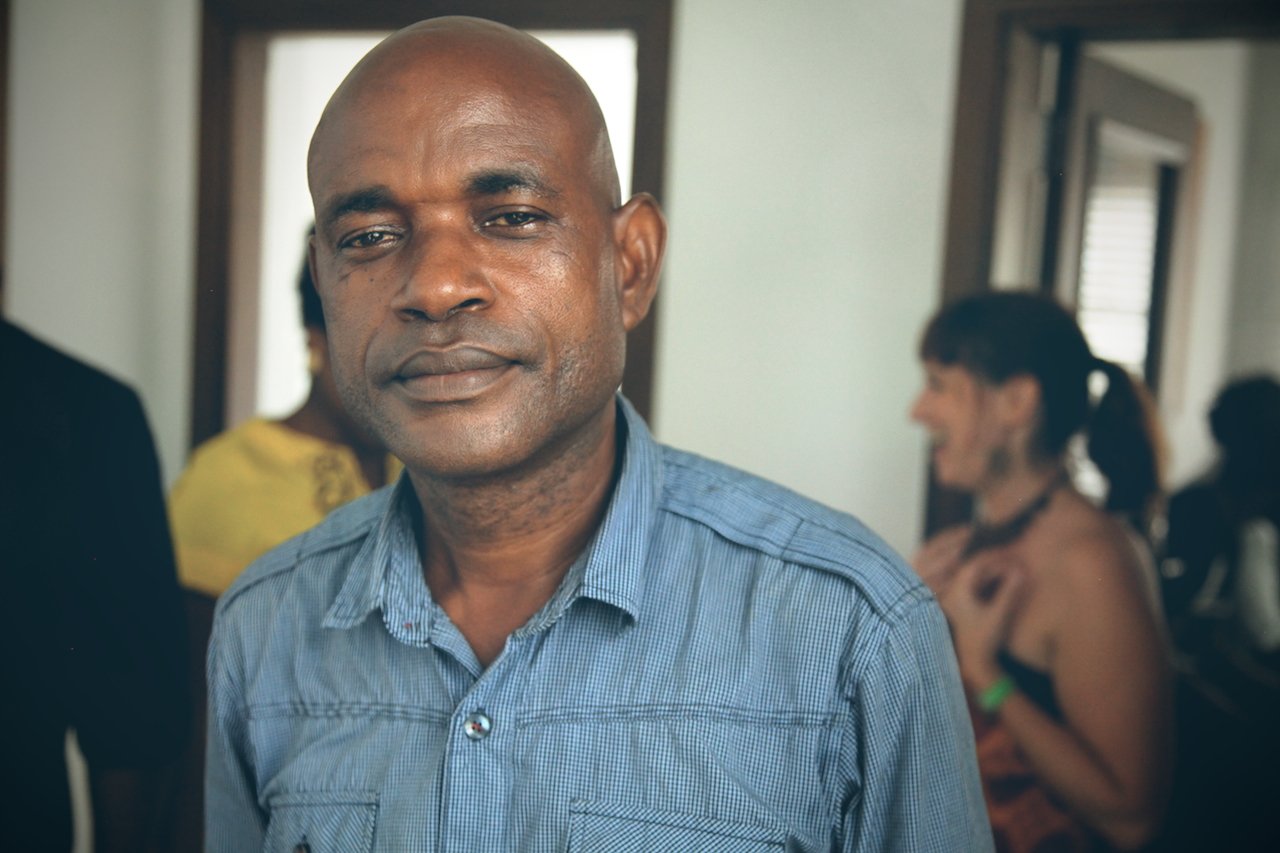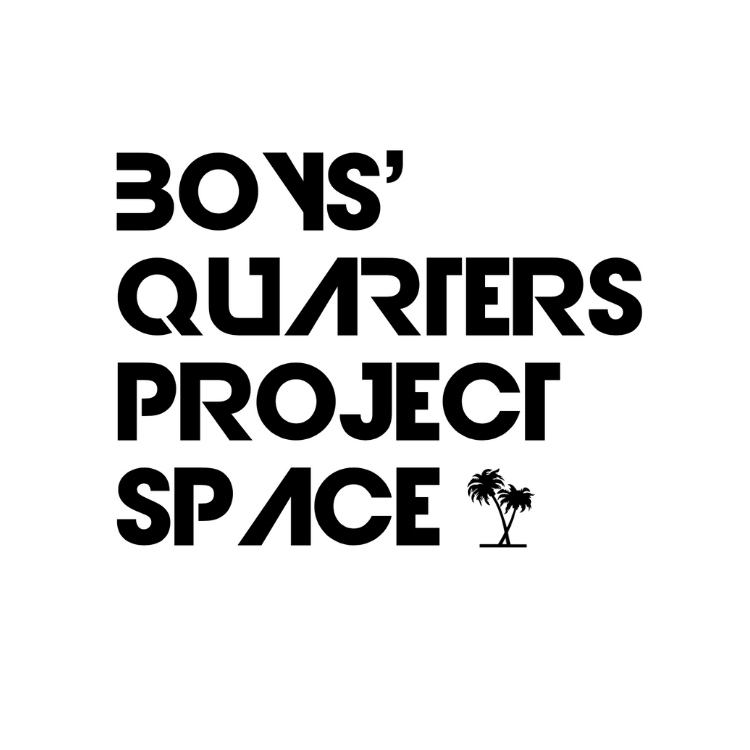OIL MAN: PAINTINGS BY SEGUN AIYESAN
Curated by Zina Saro-Wiwa
Boys’ Quarters Project Space is delighted to present Oil Man: Paintings by Segun Aiyesan. This is Boys’ Quarters second ever exhibition and it features a series of powerful works on canvas by Port Harcourt- based painter, Segun Aiyesan. The show explores the ways in which psychology and landscape meet and interact. The works chosen for the show evoke the conflicts, exuberances and tensions that come with living in a city like Port Harcourt.
The show is titled “Oil Man” for many reasons. The oil industry affects the artistic and emotional ecosystem which in turn affects the art that is produced in the Niger Delta. Segun Aiyesan is one of the artists at the very nexus of this matrix. He himself used to work in the oil industry. In 1995 he could be found on a Chevron oil rig feeling bored and restless. He painted to keep himself busy and found that his work was very popular amongst his crew. After 1996 he gave up working for Chevron, settled down in Port Harcourt and began to paint full-time. He has never looked back.
As you walk into the first gallery you are confronted by four intense canvases featuring imposing male figures, only one of which has his eyes revealed. These eyes belong to “Otondo”, a work painted in 2013. The others’ eyes are occluded or shut. Segun talks about creating these male figures because he wanted to depict strength. But when you have spent even a little time with the works it is their vulnerability that strikes you despite the size, youth and physical prowess of the men depicted. The eyes of “Otondo" staring back at you, you notice, are reddened, perhaps from tears or weariness. The co-existence of power and vulnerability is expressed expertly by Aiyesan’s technique. Due to the heavy bas relief-type layering used on the men’s bodies, the skin looks almost three-dimensional yet lacerated. The wounds and tectonic layers suggesting accommodations, hardships and many lives lived. The works speak about the effect of the economic, social and physical environment on men and masculinity in the region.
Aiyesan has maintained a home and studio in Port Harcourt for just over twenty years although he hails from the East of the country. His inspiration comes from the people and his world around him. You may, therefore, find yourself thinking about the boys that roam the streets as street hawkers or the vendors trying to persuade you to enter their “Oga’s” mechanic shop or market stall. Young men with swagger, intensity and obvious strength, yet men that are struggling to survive in an expensive, competitive and sometimes dangerous city. Vulnerable to a system that does little to support them, they, nevertheless, survive due to the aforementioned strength that Segun has sought to capture.
In the second gallery lie works that depict the physical landscape. The back wall bears multiple pastoral scenes. One is accustomed to witnessing landscapes being sold on streets as mere tourist fare. Often they are sentimental objects devoid of individuality. Yet Aiyesan’s landscapes are turbulent, urgent and alive. Far from being objects that soothe, they challenge the viewer. The colors are vivid and emotive. The brushstrokes quick and visceral. Simply framed, each landscape is highly individual. The presentation of these miniatures at Boys’ Quarters features a rupture. A crack in the landscape, reflecting the broken promise of the Garden City. A disrupted and corrupted space.
“Purple Haze” (2013), the landscape adjacent to the wall of miniatures, does a similar thing. Depicting a riverine scene, the orange glow depicts, not a sunset but a gas flare such as the ones often found where oil is being drilled for in the Niger Delta. The glowing colors take on a menace with this knowledge. However Aiyesan states that he is not a political artist. He simply paints what is. Driven more by psychology than politics, Aiyesan enables us to mine the psychic and social environment in much more searing ways.
Opposite “Purple Haze” is the triptych: “Alcove of the Soul” (2013). A very different style of painting, this abstract depicts the landscape of the mind and soul. In the centre we see a figure, reminiscent of Lady Justice, pointing an accusing finger at a figure boxed in and surrounded by a hot red. A chasm looms ominously in the frame. A guilty figure, maybe. The painting on the left of the triptych we see a comparatively calm figure standing straight and surrounded by blue. Absolved. The tension is palpable. The work talks about the internal conflict the artist sometimes suffers. A conflict many of us negotiate daily as rules are bent by different people at different times in order to survive the city.
These stunning works come together to challenge our perception of environment. Expanding notions of where environment lives. Not just around us but on us and in us.
About The Artist
Born in Benin City in 1971, the second child among seven children, Segun Aiyesan is a self-taught artist who has been a full-time practicing artist since 1996. He trained as an engineer at the Obafemi Awolowo University, Ile-Ife and before 1996 worked as an oil rig engineer for Chevron but then went on to become a successful and prolific artist. Segun Aiyesan’s canvases display a masterful technique that reveals the deeply psychological approach he has to his art and his passionate interest in the life of the mind as well as the world around him.
He lives and works in Port Harcourt.
We are grateful to The African Arts Trust for their support for Boys’ Quarters Project Space and this exhibition.























